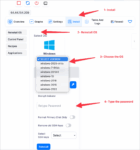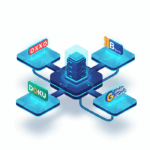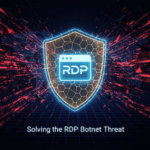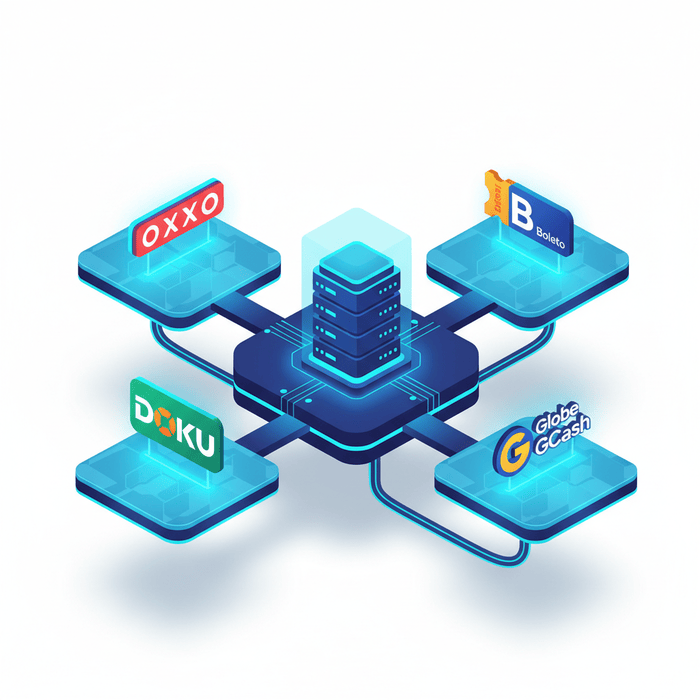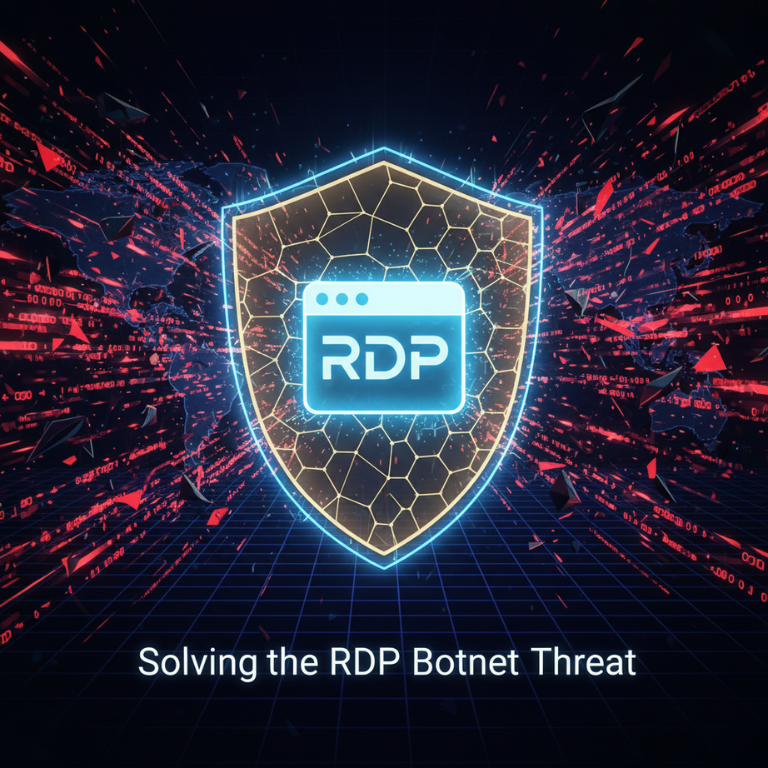In the ever-evolving landscape of remote work and IT management, reliable remote desktop applications have become essential. Whether you’re troubleshooting servers, accessing work files from home, or supporting clients remotely, having the right solution is crucial. This guide explores the top 12 remote desktop applications for 2025, designed to cater to a variety of users—from casual individuals to enterprise-level professionals.
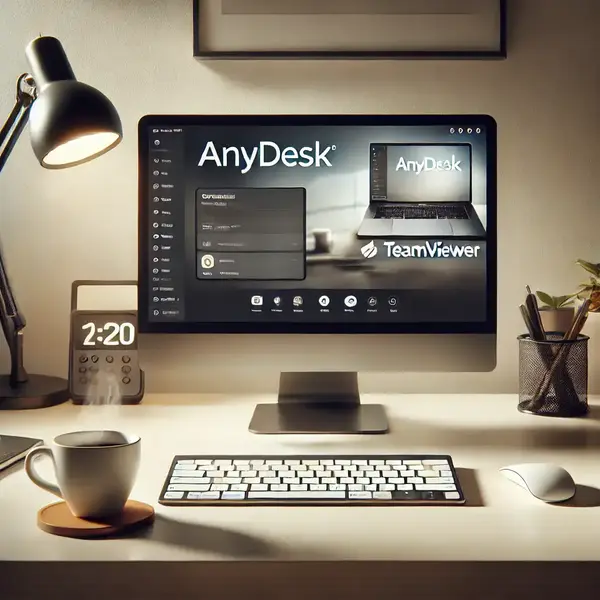
1. Free Remote Desktop Applications
1. AnyDesk: Lightweight and Reliable
- Best for: Speed and simplicity.
- Key Features:
- Low latency and cross-platform compatibility.
- Bank-level encryption for secure sessions.
- Free for personal use; paid versions available.
- Why Choose AnyDesk? As one of the top 12 remote desktop applications, AnyDesk is fast, lightweight, and user-friendly, making it perfect for quick access.
⬤⬤⬤
2. Chrome Remote Desktop: Browser-Based Convenience
- Best for: Casual users and students.
- Key Features:
- Works through Chrome or mobile apps.
- PIN-based authentication for secure access.
- Free for all users.
- Why Choose Chrome Remote Desktop? Its ease of use and integration with Google accounts solidify its place among the top 12 remote desktop applications.
⬤⬤⬤
3. RustDesk: Privacy-First Open Source
- Best for: Privacy-conscious users.
- Key Features:
- Self-hosted options for total data control.
- Open-source and customizable.
- Free for personal and commercial use.
- Why Choose RustDesk? Its emphasis on privacy and control makes it a standout choice in this list of top 12 remote desktop applications.
⬤⬤⬤
4. UltraVNC: For Tech Enthusiasts
- Best for: Advanced users and IT professionals.
- Key Features:
- File transfer and chat functionality.
- Open-source and free for personal and business use.
- Why Choose UltraVNC? A powerful tool for those who appreciate customization, it’s essential in any discussion on the top 12 remote desktop applications.
⬤⬤⬤
5. Zoho Assist: A Tool for IT Teams
- Best for: Small teams needing remote support.
- Key Features:
- Free access for up to five devices.
- Browser-based, no software installation needed.
- Why Choose Zoho Assist? A robust option for IT professionals, earning its spot among the top 12 remote desktop applications.
⬤⬤⬤
6. DWService: Minimalistic and Browser-Based
- Best for: Lightweight browser-based access.
- Key Features:
- No client installation required.
- Free and open-source.
- Why Choose DWService? A straightforward, no-frills solution deserving inclusion in the top 12 remote desktop applications.
⬤⬤⬤
2. Paid Remote Desktop Applications
7. TeamViewer: Enterprise-Grade Reliability
- Best for: Businesses and large-scale operations.
- Key Features:
- File transfer, monitoring tools, and IoT support.
- Augmented reality (AR) integration.
- Free for personal use; premium plans for businesses.
- Why Choose TeamViewer? Its extensive feature set makes it a leader among the top 12 remote desktop applications.
⬤⬤⬤
8. Microsoft Remote Desktop (RDP): Built for Windows
- Best for: Windows users.
- Key Features:
- Seamless integration with Azure services.
- Built-in on Windows Pro and Enterprise editions.
- Free for personal use; paid enhancements for businesses.
- Why Choose Microsoft RDP? Essential for Windows ecosystems, securing its place among the top 12 remote desktop applications.
⬤⬤⬤
9. Splashtop: Affordable and Versatile
- Best for: Cost-effective business solutions.
- Key Features:
- Multi-monitor support and high-quality streaming.
- Free trials and affordable pricing tiers.
- Why Choose Splashtop? Its balance of affordability and performance solidifies its position in the top 12 remote desktop applications.
⬤⬤⬤
10. RemotePC: Secure and Simple
- Best for: Freelancers and small teams.
- Key Features:
- Affordable annual plans with cloud integration.
- Intuitive interface for non-technical users.
- Why Choose RemotePC? A cost-effective, user-friendly tool on the top 12 remote desktop applications list.
⬤⬤⬤
11. Parallels Access: Mobile-Centric Design
- Best for: Users prioritizing mobile access.
- Key Features:
- Optimized for smartphones and tablets.
- Secure file access from any location.
- Why Choose Parallels Access? Its mobile-first approach makes it one of the top 12 remote desktop applications for on-the-go users.
⬤⬤⬤
12. NoMachine: Multimedia Excellence
- Best for: High-performance multimedia sessions.
- Key Features:
- Exceptional video and audio streaming quality.
- Free for personal use; premium plans available.
- Why Choose NoMachine? Unparalleled multimedia capabilities earn it a spot in the top 12 remote desktop applications.
⬤⬤⬤
⬤⬤⬤
Accessibility and Mobile Optimization
Modern remote desktop tools prioritize accessibility and mobile support. Solutions like AnyDesk and TeamViewer include features such as high-contrast modes, font scaling, and screen reader compatibility, ensuring users with varying abilities can navigate the software comfortably. Meanwhile, Parallels Access and Splashtop excel in mobile optimization, making remote work seamless across smartphones and tablets.
⬤⬤⬤
⬤⬤⬤
Security: Protecting Your Data
Remote access opens a gateway to your devices, making security a critical priority. Essential security features include:
- End-to-End Encryption: Protects sensitive data during sessions.
- Two-Factor Authentication: Adds an extra layer of protection.
- Activity Logs: Tracks all remote access for accountability.
Using secure remote desktop applications, coupled with reliable hosting services like Aminserve, ensures your data remains protected at all times.
⬤⬤⬤
⬤⬤⬤
Comparison table for the Top 12 Remote Desktop Applications:
| Application | Free/Paid | Best For | Platforms | Notable Features |
|---|---|---|---|---|
| AnyDesk | Free/Paid | Speed and simplicity | Windows, macOS, Linux, Android, iOS | Lightweight, encrypted, low latency |
| Chrome Remote Desktop | Free | Browser-based casual use | Browser, Android, iOS | PIN-based authentication, free |
| RustDesk | Free/Open-source | Privacy-conscious users | Windows, macOS, Linux, Android, iOS | Self-hosted, secure, customizable |
| UltraVNC | Free/Open-source | Tech-savvy users needing advanced features | Windows, Linux, macOS | File transfer, chat support, open-source |
| Zoho Assist | Free/Paid | IT support teams | Browser-based, with mobile apps | Unattended access, browser-based setup |
| DWService | Free/Open-source | Lightweight, browser-based access | Browser only | No installation required, secure, open-source |
| TeamViewer | Free/Paid | Enterprise-level remote support | Windows, macOS, Linux, Android, iOS | IoT support, AR integration, file transfer |
| Microsoft Remote Desktop (RDP) | Free/Paid | Windows-centric setups | Windows, macOS, iOS, Android | Azure integration, multi-session support |
| Splashtop | Paid | Cost-effective business solutions | Windows, macOS, Linux, Android, iOS | Multi-monitor support, affordable pricing |
| RemotePC | Paid | Freelancers and small teams | Windows, macOS, Android, iOS | Secure cloud access, intuitive interface |
| Parallels Access | Paid | Mobile-first design | Windows, macOS, Android, iOS | Optimized for tablets, mobile access |
| NoMachine | Free/Paid | High-quality multimedia access | Windows, macOS, Linux, Android, iOS | High-performance streaming, open-source |
⬤⬤⬤
⬤⬤⬤
FAQs: Quick Answers to Common Questions
Q: Is remote desktop software safe to use?
A: Yes, remote desktop software is generally safe when proper security measures are implemented, such as enabling two-factor authentication, using end-to-end encryption, and keeping the software updated. Hosting services like Aminserve enhance security with DDoS protection and firewalls.
Q: Which remote desktop application works best on low-bandwidth connections?
A: AnyDesk and Chrome Remote Desktop are optimized for low-bandwidth environments, making them reliable even with slower internet speeds.
Q: Can I use remote desktop apps to access files on my phone?
A: Yes, tools like Splashtop and Parallels Access are specifically designed for mobile access, allowing you to retrieve and manage files seamlessly from your smartphone or tablet.
Q: Are free remote desktop applications sufficient for business use?
A: Free tools like RustDesk and Zoho Assist can handle basic business needs but may lack advanced features like multi-user management and enterprise-level support. For full functionality, consider paid tools like TeamViewer or Splashtop.
Q: What’s the best remote desktop tool for IT support?
A: Zoho Assist and TeamViewer are excellent choices for IT support teams, providing features like unattended access, file transfers, and remote troubleshooting.
Q: Do remote desktop tools support multi-monitor setups?
A: Yes, tools like Splashtop, TeamViewer, and Microsoft RDP support multi-monitor configurations, ideal for complex workflows.
Q: What are the best open-source remote desktop tools?
A: RustDesk, UltraVNC, and DWService are excellent open-source options, offering robust features without a subscription cost.
Q: Can I remotely access my office computer while traveling?
A: Absolutely! With tools like AnyDesk and Microsoft RDP, you can securely connect to your office computer from anywhere with an internet connection.
Q: What’s the most beginner-friendly remote desktop tool?
A: Chrome Remote Desktop is incredibly easy to use, with a simple setup process and straightforward interface—perfect for first-time users.
Q: How do I choose the right remote desktop application for my needs?
A: Consider your technical expertise, required features (like file transfer or multi-monitor support), security needs, and whether you prefer a free or paid solution. This list of the top 12 remote desktop applications can help you find the best fit.
By selecting the right remote desktop application from this comprehensive list, you can simplify remote work, enhance productivity, and keep your operations secure. Whether you’re a casual user or part of a large enterprise, these tools offer a range of features to meet your needs.
For seamless performance and unmatched security, explore Aminserve’s RDP hosting solutions. Start your journey toward better connectivity today!

